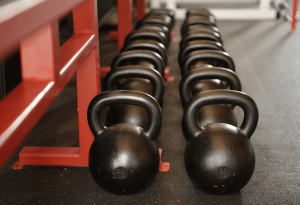We have previously talked about the importance of Time Under Tension (TUT) when lifting. However, reevaluating the research made us realize that TUT actually is overrated. Here’s why.
TUT gained popularity after Burd et al found more leg gains from training TUT (6s-6s) versus doing the same volume withou TUT (1s-1s) (1). The problem with this study is that the TUT group went to failure, while the other group didn’t (they simply did as many reps as the TUT group). This means that the TUT group had BOTH a longer TUT AND more metabolic stress from going to failure. So which of these two actually caused the added muscle gains? Who knows!
Time Under Tension and Strength
To answer this we need a study where both groups go equally close to failure. Voila! A study compared 3s-3s TUT training to 1s-1s non-TUT training. Weight was adapted so both groups could do 8 reps max to failure. There was no difference between the groups when it came to muscle gains. When looking at strength, the non-TUT group gained more strength compared to the TUT group (probably because they could use heavier weight for 8 fast reps). (2) Other studies have also found that TUT training has negative effects on strength and rate of force development. (3, 4, 5)
So TUT doesn’t seem to matter for muscle size, but seems to have a NEGATIVE effect on strength. We an speculate that TUT probably beneficial for muscle mass in the long run either, since TUT leads to using lighter weights, or doing fewer reps which means less volume (3, 6). Volume is a key driver of hypertrophy. (7)
What the Research says
Focus on adding volume over time, rather than TUT-training. The benefits of TUT are probably due to going to failure, and not TUT per se.
Sources:
1. Burd et al 2012. Muscle time under tension during resistance exercise stimulates differential muscle protein sub-fractional synthetic responses in men. The Journal of physiology, 590(2), 351-362.
2. Munn et al 2005. Resistance training for strength: effect of number of sets and contraction speed. Medicine & Science in Sports & Exercise, 37(9), 1622-1626.
3. Hatfield et al 2006. The impact of velocity of movement on performance factors in resistance exercise. Journal of Strength and Conditioning Research, 20(4), 760.
4. Neils et al 2005. Influence of contraction velocity in untrained individuals over the initial early phase of resistance training. Journal of Strength and Conditioning Research, 19(4), 883.5555.
5. Kim et al 2011. Effects of 4 weeks of traditional resistance training vs. superslow strength training on early phase adaptations in strength, flexibility, and aerobic capacity in college-aged women. The Journal of Strength & Conditioning Research, 25(11), 3006-3013.
6. Headley et al 2011. Effects of lifting tempo on one repetition maximum and hormonal responses to a bench press protocol. The Journal of Strength & Conditioning Research, 25(2), 406-413.
7. Schoenfeld et al 2017. Dose-response relationship between weekly resistance training volume and increases in muscle mass: A systematic review and meta-analysis. J Sports Sci 35: 1073-1082.









